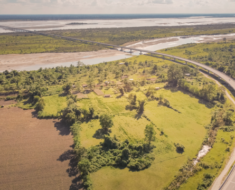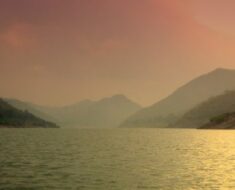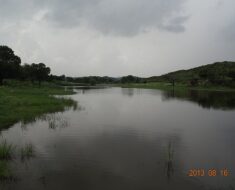India is a land of rivers and fortunately, the country is blessed with almost eight river systems and over 400 rivers.
Rivers are the lifeline of a country. They are very important for the overall development and economy of a country.
Many ancient civilizations evolved and thrived along the bank of rivers. Indus Valley Civilization at Indus, Egypt at the Nile, Babylon at Tigris, and Mesopotamia between Euphrates and Tigris.
Here is a list of the Top 10 Longest Rivers in India in terms of length.
1. Ganga River
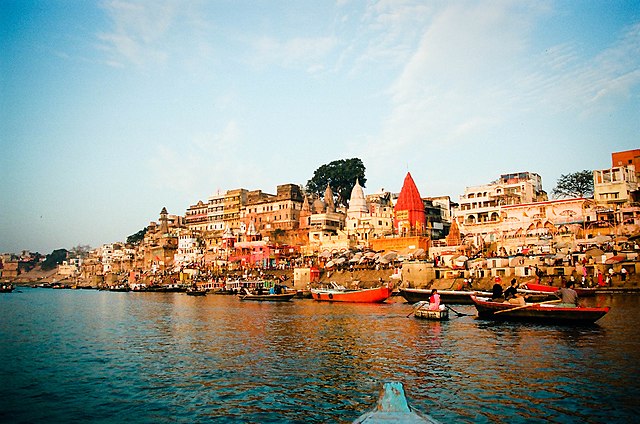
The Ganges also known as the Ganga is the longest river in India. It is worshipped as the goddess Ganga in Hinduism. It is considered the goddess of purification and forgiveness.
Originating from the Gangotri glacier, the main stem of the Ganges begins at Devprayag at the confluence of the Alaknanda and the Bhagirathi.
The Ganga is a transboundary river that flows through India and Bangladesh. Ganga is called the Padma in Bangladesh.
It is joined by Jamuna, the lower stream of the Brahmaputra, and eventually the Meghna for the major estuary of the Ganges Delta. And then it discharges into the Bay of Bengal.
The Ganges-Brahmaputra-Meghna system is the third largest river on earth by discharge.
Ganga covers a distance of 2525 km before it discharges in the Bay of Bengal. It flows through the states of Uttarakhand, Uttar Pradesh, Bihar, and West Bengal.
Major tributaries of the river Ganga are Gomti, Ghaghara, Yamuna, Son, Gandak, and Koshi
Read More: Longest River In India – The Ganga
2. Godavari River

The Godavari River stands in the second position among the longest rivers in India. It is also called the Dakshin Ganga or South Ganges. It originates from Trimbakeshwar, Nashik in Maharashtra.
Then it flows through the states of Chhattisgarh, Telangana, and Andhra Pradesh, and finally empties into the Bay of Bengal.
The Godavari river has an extensive network of tributaries and is the largest Peninsular river system. It has a total length of 1464 km.
The major left bank tributaries are Purna, Pranhita, Indravati, and Sabari River, and the right bank tributaries are Pravara, Manjira, and Maner.
The river is considered holy in Hinduism and is immensely revered by Hindus. Many places on the banks of the Godavari river have been places of pilgrimage for thousands of years.
Read More: Ganga of South India- The Dakshin Ganga | The Godavari River
3. Krishna River

The Krishna River is the third longest river in India, it is also called Krishnaveni.
It is the fourth-largest in terms of water inflows and river basin area in India, after the Ganges, Indus, and Godavari.
The Krishna River originates in the Western Ghats near Mahabaleshwar in the state of Maharashtra. It flows through the states of Maharashtra, Karnataka, Andhra Pradesh, and Telangana and finally empties into the Bay of Bengal.
The total length of the Krishna river is 1400 km and has 13 major tributaries.
Tungabhadra River is the largest tributary and Bhima River is the largest tributary. Some other important tributaries of the Krishna river are Panchganga, Dudhaganga, Ghataprabha, Warna, and Yerla
It is the main source of irrigation in the states of Maharashtra, Karnataka, Telangana, and Andhra Pradesh.
4. Yamuna River

The Yamuna River stands in the fourth position among the longest rivers in India. It originates from the Yamunotri Glacier at the Banderpoonch peak in the Uttarkashi district of Uttarakhand at a height of about 4,500 m.
The Yamuna river is the longest tributary of the Ganga and the second largest tributary by discharge.
It merges with the Ganges at Triveni Sangam, Allahabad, which is a site of the Kumbh Mela, a Hindu festival held every 12 years.
Like the Ganges, the Yamuna is also worshipped in Hinduism as the goddess Yamuna.
In Hinduism, she is the daughter of the sun god, Surya, and the sister of Yama, the god of death.
The major tributaries of the Yamuna are Hindon, Sharda, Giri, Rishiganga, Hanuman Ganga, Sasur, Chambal, Betwa, Ken, Sindh, and Tons.
The total length of the Yamuna is 1376 km and it flows through Uttarakhand, Himachal Pradesh, Delhi, Haryana, and Uttar Pradesh.
5. Narmada River

The Narmada River stands in the fifth position among the longest rivers in India. It is also called the Reva and was previously also known as Narbada or Nerbudda.
The Narmada River originates from the Amarkantak Plateau in Anuppur district Madhya Pradesh and it flows through Madhya Pradesh and Gujarat.
It is also known as the “Life Line of Madhya Pradesh and Gujarat”
In Hinduism, the Narmada is one of the seven heavenly waterways of India. The other sacred rivers are Ganges, Yamuna, Godavari, Saraswati, Sindhu, and Kaveri.
The Narmada has a total length of 1,312 km and drains into the Arabian Sea at the Gulf of Khambhat.
It is one of only two major rivers in peninsular India that runs from east to west along with the Tapti River.
Read More: Shortest River in India – The Arvari River
6. Indus River

River Indus has a historic and ancient significance. The Indus Valley Civilization flourished around the banks of the Indus River.
It originates from Mount Kailash near Mansarovar Lake and then crosses Ladakh, Gilgit, and Baltistan, and then enters Pakistan. From where it discharges into the Arabian Sea near the port city of Karachi.
However, the distance covered within India is only 1,114 km, which makes it the sixth longest river in India. The total distance of the Indus River is 3180 km.
Indus River’s left-bank tributary in Ladakh is the Zanskar River and in the plains is the Panjnad River which is formed by the successive confluences of the five Punjab rivers, namely the Chenab, Jhelum, Ravi, Beas, and Sutlej rivers.
Its principal right-bank tributaries are the Shyok, Gilgit, Kabul, Kurram, and Gomal rivers.
7. Brahmaputra River
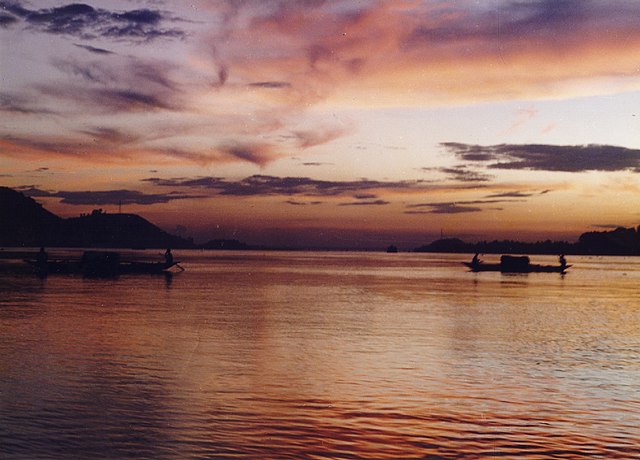
The name Brahmaputra origins in Sanskrit and means ‘The son of Brahma’.
It originates from the Angsi Glacier which is located near the Mansarovar in the Mount Kailash region in Burang County of Tibet. It is the second river that originates from the Mansarovar ranges
Earlier, the Chemayungdung glacier was thought to be the source of the river.
The total length of the Brahmaputra river is 2900 km and around 916km in India.
It is known by different names in the countries and regions it flows.
It is known as the Yarlung Tsangpo in Tibet, in Arunachal Pradesh by name of the Siang or Dihang River, and in the Indian state of Assam, it is called Luit.
When the Brahmaputra reaches Bangladesh it is called by the name Jamuna and it discharges into the Bay of Bengal.
The Brahmaputra is the deepest river in India. The average depth of the river is 30 m (100 ft) and its maximum depth is 135 m (440 ft) at Sadiya.
Read More: Deepest River in India – The Brahmaputra
8. Mahanadi River

The Mahanadi River is a major river in east-central India. It flows through the states of Odisha and Chattisgarh and finally discharges into the Bay of Bengal.
The major left bank tributaries of Mahanadi are Seonath, Mand, Ib, Hasdeo, and Kelo, and the right bank tributaries are Ong, parry, Jonk, and Telen.
The Mahanadi has a total length of 890 km and was considered infamous for its devastating floods. It was called ‘the sorrow of Orissa’.
However, the construction of the Hirakud Dam has greatly changed the situation.
9. Kaveri River
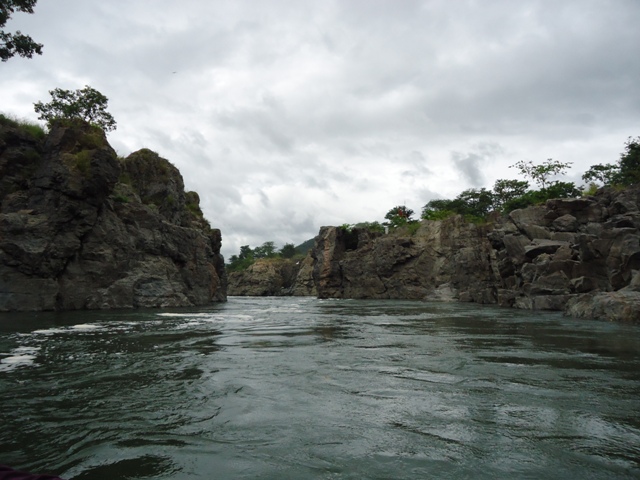
The Kaveri or sometimes spelled as Cauvery is the major river flowing in the states of Karnataka and Tamil Nadu.
It is the third largest river in southern India after Godavari and Krishna and the largest in the State of Tamil Nadu.
The Kaveri river is referred to as Ponni in ancient Tamil literature. It is a venerated river for the people of South India and is worshipped as the Goddess Kaveriamma.
It originates at Talakaveri in the Brahmagiri range in the Western Ghats, Kodagu district of Karnataka, and discharges into the Bay of Bengal.
The total length of the Kaveri River is 800 km. And before emptying into the Bay of Bengal it breaks into a large number of distributaries forming a wide delta called the “garden of southern India.”
The left bank tributaries of the Kaveri river are Harangi, Hemavati, Shimsha, Arkavathy, and the right bank tributaries are Lakshmana Tirtha, Kabini, Bhavani, Noyyal, Amaravati, and Moyar.
Read More: Cleanest River in India – The Umngot River
10. Tapti River

The Tapti or Tapi River stands in the tenth position among the longest rivers in India. It has a total length of around 724 km and is the second largest west-flowing river in India after the Narmada River.
It originates in Multai town in the Betul district of Madhya Pradesh.
The river Tapti flows through the states of Maharashtra, Gujarat, and Madhya Pradesh, and discharges into the Gulf of Khambhat, in the Arabian Sea.
The left bank tributaries of the Tapti river are Nesu, Amravati, Buray, Panjhara, Bori, Girna, Waghur, Purna, Mona, and Sipna. These tributaries originate in the Gawilgarh hills, Ajanta hills, the Western Ghats, and Satmalas
The right bank tributaries of the Tapti river are Vaki, Aner, Arunawati, and Gomai which originate in the Satpura ranges.
List of Top 10 Longest Rivers in India
| S.No | Rivers Name | Length in India (km) | Total Length (km) |
|---|---|---|---|
| 1 | Ganga | 2525 | 2525 |
| 2 | Godavari | 1464 | 1465 |
| 3 | Krishna | 1400 | 1400 |
| 4 | Yamuna | 1376 | 1376 |
| 5 | Narmada | 1312 | 1312 |
| 6 | Indus | 1114 | 3180 |
| 7 | Brahmaputra | 916 | 2900 |
| 8 | Mahanadi | 890 | 890 |
| 9 | Kaveri | 800 | 800 |
| 10 | Tapti | 724 | 724 |

